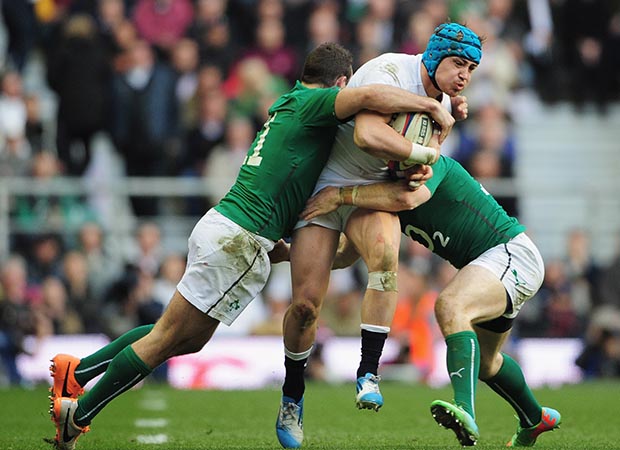 The start of a new year always brings anticipation for what lies ahead but also the chance to take a look back. For me, with the Lions at the tail end of this season, it has a similar feel to the start of 2015 when we were all looking forward to England staging the World Cup.
The start of a new year always brings anticipation for what lies ahead but also the chance to take a look back. For me, with the Lions at the tail end of this season, it has a similar feel to the start of 2015 when we were all looking forward to England staging the World Cup.
The anticipation of a possible win, if not for England at least for one of the Northern Hemisphere countries, only to end in disappointment as all involved failed to live up to expectations, left it all rather flat.
This year, we all have hope for the Lions – and half a season playing with the new tackle laws before the tour should give our players a slight advantage. They will learn to adapt to how referees implement the changes and take advantage of some of the positive potential it could create. Add to that the improvement of the Irish and England teams and the potential ‘wild card’ players from Wales and Scotland, and the Lions may yet prove to be more than competitive against the All Blacks.
The tackle law changes could have the beneficial impact of ‘opening up’ the game, allowing for more off-loads and continuity during games, thereby countering the heavy defensive slog the game has become as teams have become more regimented.
Off-loading during tackles is one of the hardest areas to defend as attack runners can come from any angle using the space created at the shoulder of the tackled player making man-on-man defence harder to organise.
The introduction of Rugby League- style defences has stagnated attacking rugby for a number of years with teams focusing on how to stop the opposition and getting penalties rather than attempting to score tries.
Teams are happy to kick possession away and rely on aggressive defence to restrict the opposition to their own half within goal kicking range.
The chest high and swinging arm tackle that’s used as an attempt to ‘kill’ the ball in a ‘one-on-one’ situation, has increased the risk of both hitting the head and head-on-head contact, so it’s more than understandable why World Rugby has acted.
The introduction of the professional game has seen many crossovers from League to Union but none have been as influential as the changes in the way teams defend with the vast majority of international defence coaches coming from League.
They changed the whole structure of defence from drift defence, where players moved across the field tackling the man outside with the inside space filled by trailing forwards for any ‘cut backs’ to the man-on-man style of rush defence. Unlike drift defence, which was led by the fly-half tackling the inside centre, rush defence starts from the wing and closes the space from the outside in with each player tackling his opposite number.
In League, where there is more space because there are fewer players on the field, it is important to stop the ball, so a ‘double tackle’ was created, where one player tackled round the legs while another hit at chest height stopping the ball, which brings the game to a halt.
In Union, teams have found something similar in style but because the game continues after the tackle there is a greater chance the referee will award a penalty against the tackled player for not releasing if defenders can kill the ball in the ‘hit’ and get other defenders quickly to the breakdown.
When as a schoolboy I was taught to tackle, you went in low, put your head to the side and hit the ball carrier no higher than the hips, sliding down while holding the legs until the player hit the ground.
The swinging arm tackle is designed to hurt the tackled player while holding him up to trap the ball.
Although the old low level tackle had its potential dangers, knees hitting your head or face etc., it was far safer than the stand-up chest high modern hit. So the puzzling question is: Why haven’t World Rugby just banned tackling above the waist in open play?
I say open play because in the tight rough and tumble that is the forward game there are occasions when players will be grabbed around the chest but it doesn’t hold the potential risks of two backs running over ten yards at each other and trying to hit at chest height.
As with every law change, however teams approach it, there is likely to be a rash of cards and penalties until coaches re-learn some of the ‘old ways’ but if they embrace the idea and focus more on attack, rugby really could be the winner.
* On December 29 last year a former team-mate of mine, Dennis Bedford, died. We played together at Streatham and Croydon for a few years back in the late 1970’s.
In all honesty he wasn’t a great player or coach – but he was a good, honest old fashioned rugby player who having coached me and watched me play, made an observation that changed my life.
Dennis was the man that suggested I move to tighthead after I played just a few games in that position. This prompted my rise to the ranks of England.
A friend told me Dennis was happy at the end because as a life-long Bristol fan he got to see them win a Premiership game before he died. RIP my old friend.
























